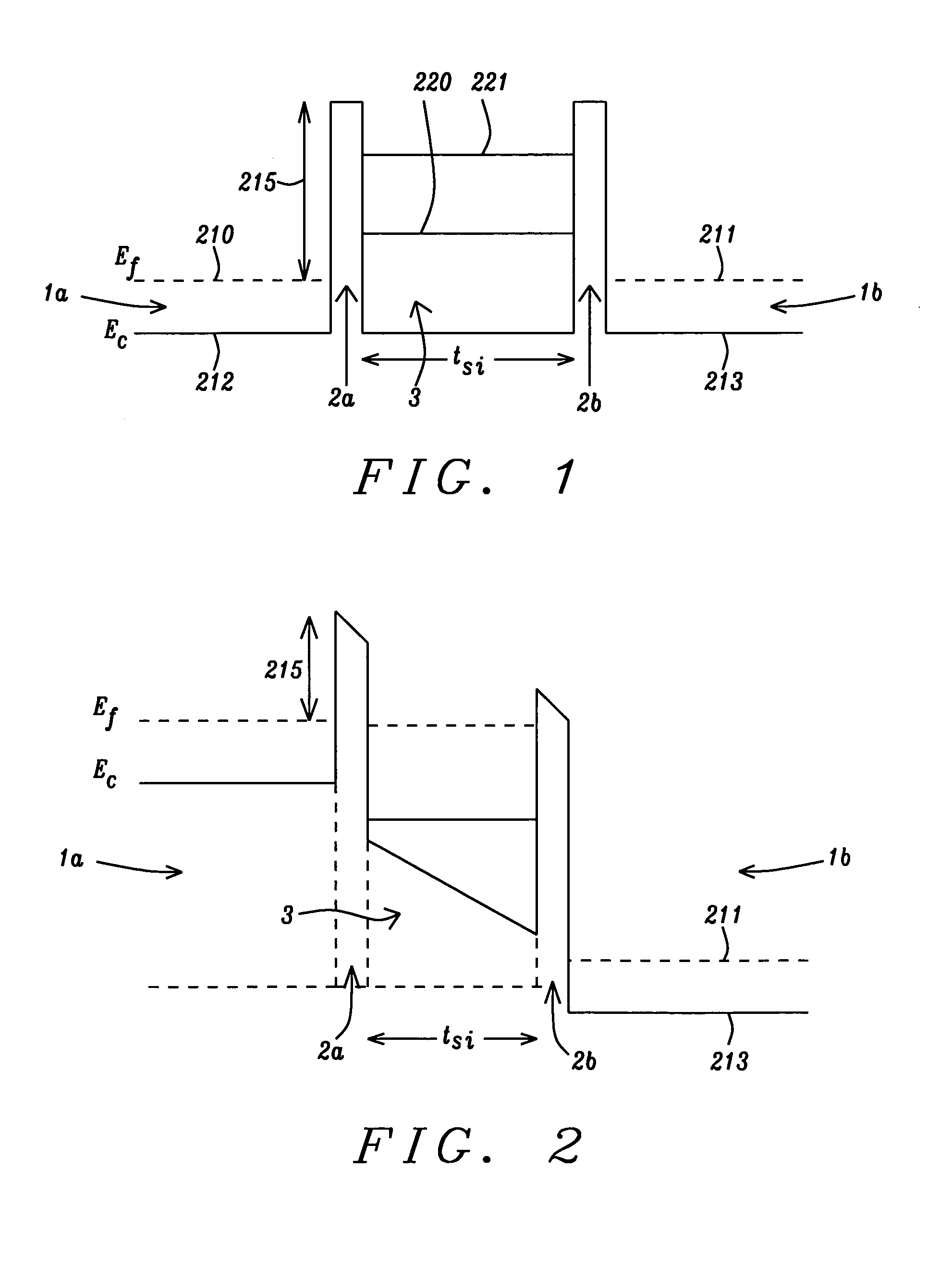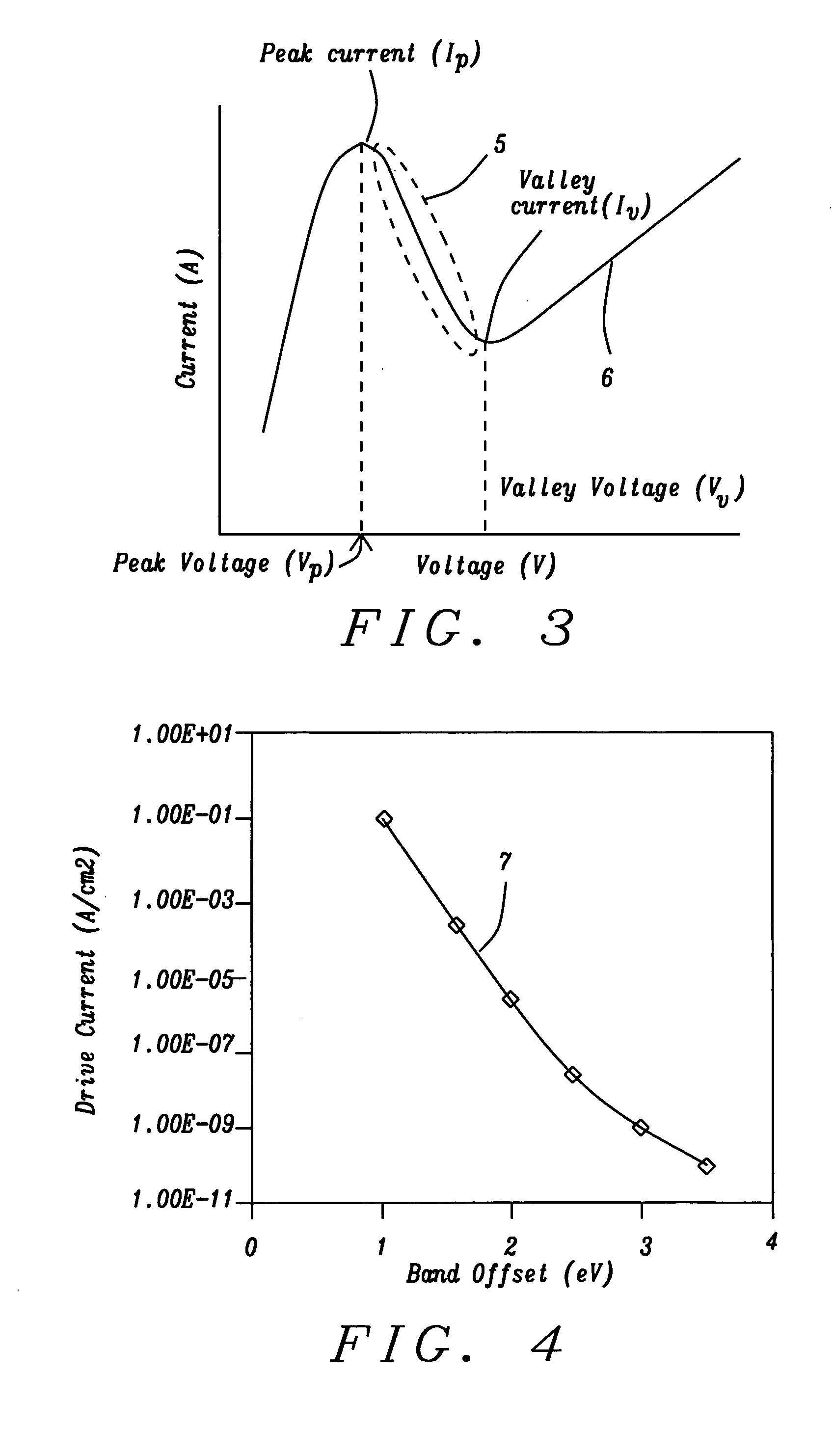CMOS compatible low band offset double barrier resonant tunneling diode
a tunneling diode and low band offset technology, applied in the field of solid-state electronics, can solve the problems of difficult integration of rtds into mainstream si cmos ic technology, siosub>2/sub>/si type rtds, and difficult to achieve high peak-to-valley ratio and good i-v characteristics
- Summary
- Abstract
- Description
- Claims
- Application Information
AI Technical Summary
Benefits of technology
Problems solved by technology
Method used
Image
Examples
Embodiment Construction
[0024] The preferred embodiments of the present invention include three methods of forming a RTD structure using low band offset dielectrics as barrier layers formed adjacent to and in contact with a quantum well formed of a silicon layer. In the case of the silicon layer, the fabrication process will begin most advantageously with a silicon-on oxide (SOI) substrate, which is a substrate of choice in many fabrication processes. However, the method to be presented can also be applied advantageously to Ge quantum wells and to SiGe quantum wells, in which cases the substrate of choice would be a Ge-on-oxide (GOI) substrate or a SiGe-on-oxide substrate. It is also envisioned that other semiconductor materials could be formed into quantum well structures, in which case other substrates could be employed. Although the examples to be presented specifically mention Si, Ge and SiGe and although Si is most probbly the most common semiconductor material being employed in semiconductor fabricat...
PUM
 Login to View More
Login to View More Abstract
Description
Claims
Application Information
 Login to View More
Login to View More - R&D
- Intellectual Property
- Life Sciences
- Materials
- Tech Scout
- Unparalleled Data Quality
- Higher Quality Content
- 60% Fewer Hallucinations
Browse by: Latest US Patents, China's latest patents, Technical Efficacy Thesaurus, Application Domain, Technology Topic, Popular Technical Reports.
© 2025 PatSnap. All rights reserved.Legal|Privacy policy|Modern Slavery Act Transparency Statement|Sitemap|About US| Contact US: help@patsnap.com



